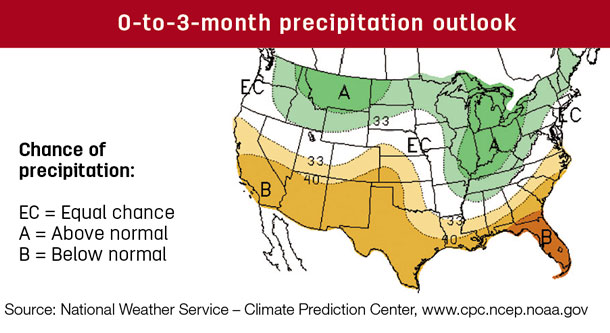To optimize pregnancy rates, cows that will be 2 or 3 years old at calving should be in a body condition score (BCS) of 6 or greater at calving. Cows 4 years old or older should be in a BCS of 5 or greater at calving.
As a reminder, the BCS scale goes from 1 to 9, with a 1 being really thin and a 9 being obese. A cow in a BCS of 5 would not appear thin or fat. No ribs would be visible, and the area from hooks to pins would be filled in with muscle. A cow in a BCS of 6 would start to show some fat in the brisket as well as around the tailhead; fat pons would be about the size of a small orange.

Research in Texas and Oklahoma would suggest increasing pre-calving BCS from a 3 to a 4 would increase pregnancy rates by about 30 to 35 percentage points (e.g., from 35 to 65 percent pregnant). Increasing pre-calving BCS from a 4 to a 5 would increase pregnancy rates by about 20 to 25 percentage points.
Cows that meet BCS targets at calving should be fed during lactation so that they don’t lose more than 1 condition score in about 100 days. If cows are not in the desired body condition, a few management strategies can be utilized to reduce the negative effects of low BCS at calving:
- If cows are really thin, early weaning of calves at 6 to 8 weeks old should be considered. Although this may seem drastic, it is the best approach to maximize the number of cows that get rebred in a 90-day breeding season.
- If cows are only 1 to 1.5 condition scores below target levels, then 48-hour calf removal can be used to increase the number of cows that get rebred. Another strategy for cows in this range is to increase the amount of supplementation during early lactation.
Having cows in the appropriate body condition at calving is always important. However, with the dry conditions in the south-central region, it is even more important this year. ![]()

-
Jason Banta
- Associate Professor and Extension Beef Cattle Specialist
- Texas A&M University
- Email Jason Banta







